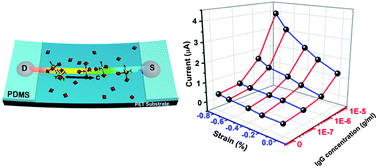High performance of ZnO nanowireprotein sensors enhanced by the piezotronic effect
Abstract
Based on a metal–semiconductor–metal structure, the performance of a ZnO

* Corresponding authors
a
School of Materials Science and Engineering, Georgia Institute of Technology, Atlanta, Georgia 30332-0245, USA
E-mail:
zlwang@gatech.edu
Web: http://www.nanoscience.gatech.edu
b Beijing Institute of Nanoenergy and Nanosystems, Chinese Academy of Sciences, Beijing, China
Based on a metal–semiconductor–metal structure, the performance of a ZnO

 Please wait while we load your content...
Something went wrong. Try again?
Please wait while we load your content...
Something went wrong. Try again?
R. Yu, C. Pan and Z. L. Wang, Energy Environ. Sci., 2013, 6, 494 DOI: 10.1039/C2EE23718K
To request permission to reproduce material from this article, please go to the Copyright Clearance Center request page.
If you are an author contributing to an RSC publication, you do not need to request permission provided correct acknowledgement is given.
If you are the author of this article, you do not need to request permission to reproduce figures and diagrams provided correct acknowledgement is given. If you want to reproduce the whole article in a third-party publication (excluding your thesis/dissertation for which permission is not required) please go to the Copyright Clearance Center request page.
Read more about how to correctly acknowledge RSC content.
 Fetching data from CrossRef.
Fetching data from CrossRef.
This may take some time to load.
Loading related content
